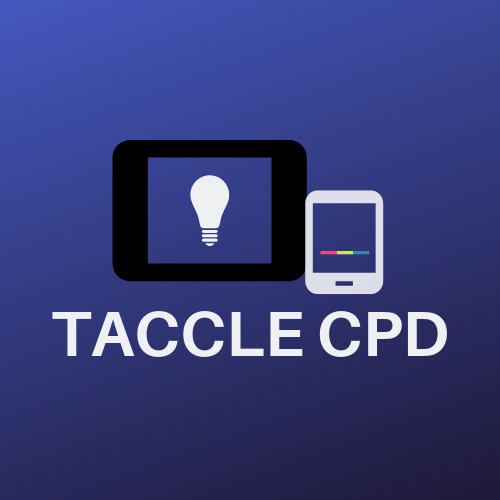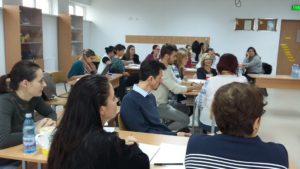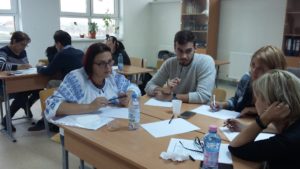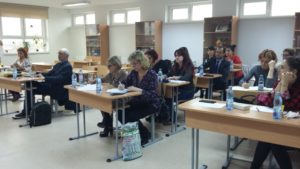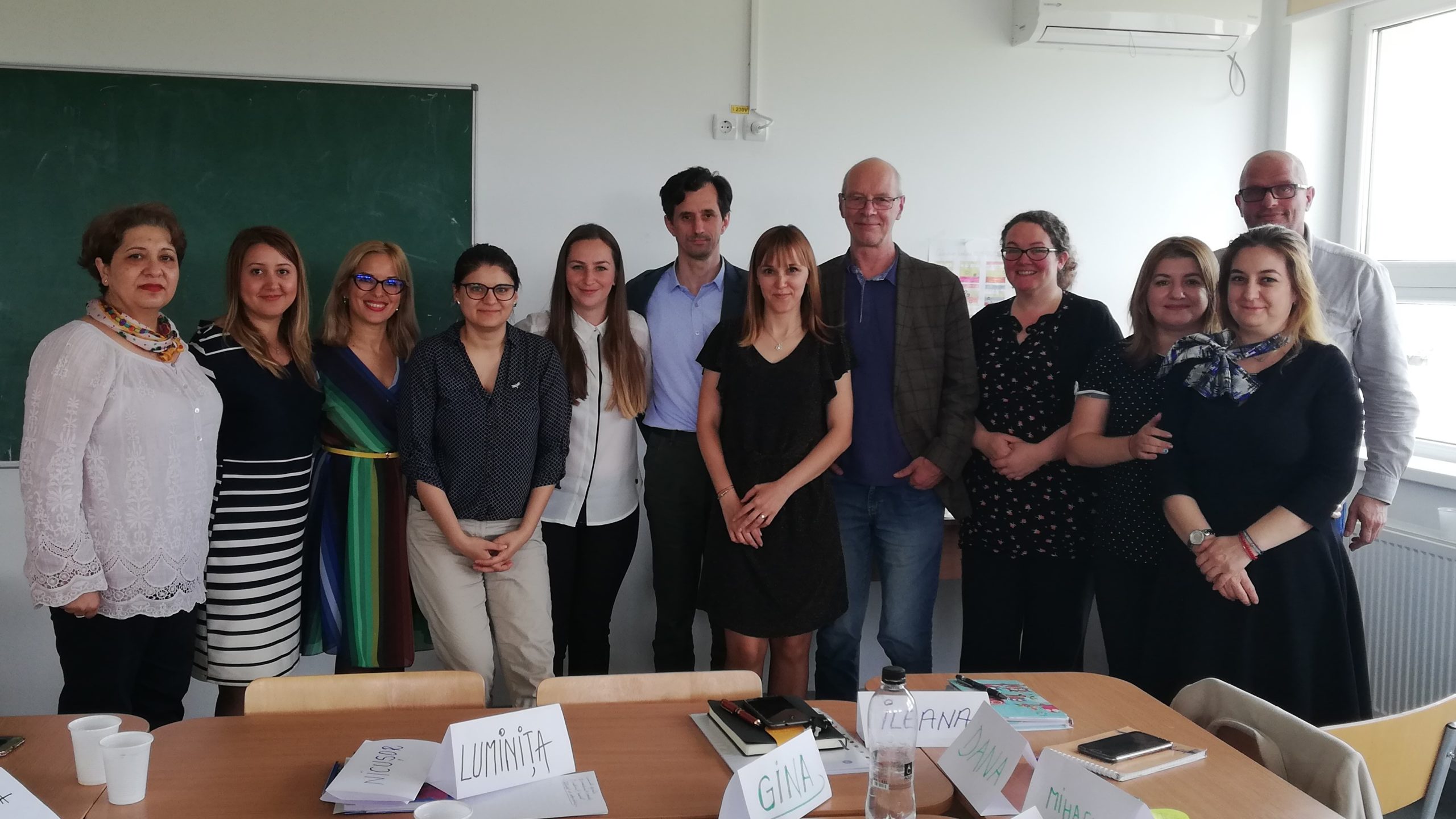All posts by Angela Gerrard
Digital Assessment Tools
Learning Toolbox – New Users guide
Learning Toolbox
Learning Toolbox – Scenario
The Learning Toolbox (LTB) scenario for working with an integrative toolset in vocational learning contexts
Target audience:
School and training managers (leaders; coordinators, team leaders etc.) as well as educational and in company actors, such as trainers or IT admins or HRD managers, VET teachers as well as dual students, trainees or apprentices.
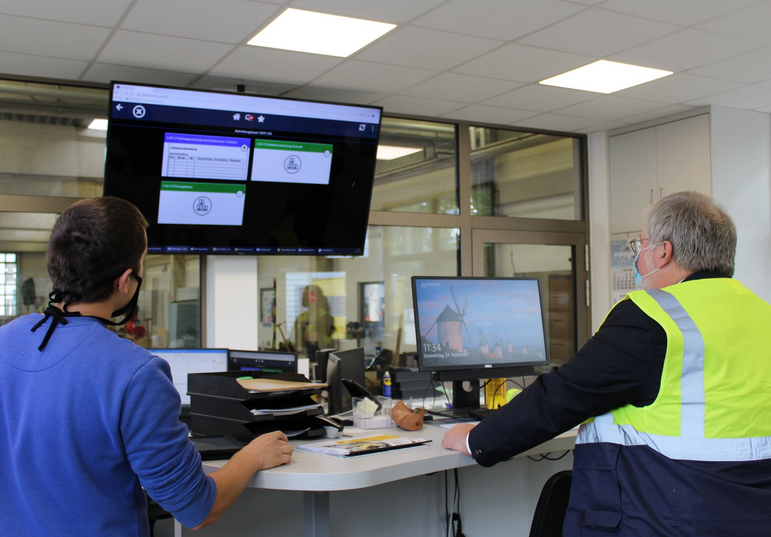
Introduction
First the background of this scenario will be described first and followed the scenario develops as well as the key results including the assessment of the scenario.
Research and development in Personal Learning Environments has made considerable progress in recent years. Yet although often acknowledging the importance of informal learning is rising but research focuses largely just on formal education. Far less attention has been paid to work based and work integrated learning and still less to the particular context of learning at work in Small and Medium Enterprises (SMEs) (Gustavsen, Nyhan, Ennals, 2007).
The Learning Layers project (2012-2016) developed innovative digital media with partners from professional practice and science. One of these applications is the Learning Toolbox: the smart combination of work and learning in everyday work. The Learning Toolbox (LTB) scenario enables you to put together your own small apps on specific topics.
Conceptual introduction
The scenario supports largely informal and mobility based learning processes across different learning spaces such as the training centre, the workplace within an learning company, the private sphere of the learner at home or on a move as well as the VET school/college. Therefore three Layers focus on interaction under three types of levels involved in informal learning process:
- Layer that invites informal interactions with people across enterprises in the cluster, scaffolds workplace learning by drawing on networks of learners and keeps these interactions persistent so that they can be used in other contexts by other persons,
- Layer that supports creation, maturing and interaction with learning materials as boundary objects and guides this processes by tracking the quality and suitability of these materials for learning, and
- Layer that situates and scaffolds learning support into the physical workplace and captures people’s interactions with physical artefacts inviting them to share their experiences with them.
All three interaction layers draw on a common Social Semantic Layer that ensures learning is embedded in a meaningful context. This layer captures and emerges the shared understanding in the community of learners by supporting the negotiation of meaning. To achieve this, the social semantic layer captures a number of models and lets the community evolve these models through PLEs in a social negotiation process.
Work based Personal Learning Environments will be based on a series of Learning Layers. In building heavily on existing research on situated and contextualised learning, Learning Layers provide a meaningful learning context when people interact with people, digital and physical artefacts for their informal learning. Learning Layers provide a shared conceptual foundation independent of the personal tools people use for learning.
The scenario was planned, developed and tested within the building and construction industry. The scenario illustrates how this technologies was made operational in the regional North West German building and construction cluster.The Learning Toolbox (LTB) was the main end product of a co-design process in the EU-funded Learning Layers project. The LTB was shaped in a participative and iterative design process – involving trainers and other practitioners in construction sector.
Process of developing the Learning Toolbox
The process that led to the making of the integrative toolset was one of the design activities launched in the beginning of Learning Layers project. Originally the design idea was to digitize training and learning materials for apprentice training. However, a new approach was found and the process started developing a toolset to access relevant web resources, share digital contents and share information on training and learning.
In the context of apprentice training the responsible trainers prepared for their groups of apprentices an LTB-stack. The stack consists of tiles with which the users share documents, give access to web links and manage communication. The learners receive instructions, worksheets, reporting forms and permissions to upload photos (as evidence for interim results) or video’s.
Co-design and search for appropriate tools: In the Construction pilot the co-design work was started with interviews and participative workshops that mapped potential uses of digital tools that could support construction work and related learning. In several iterations the design idea was transformed into the shaping of an integrative toolset (mobile app) that provides access to web resources, project documents and work- and learning-related contacts (“Learning Toolbox”). This process was shaped as a strongly R&D dialogue that involved construction sector trainers, technical partners and accompanying researchers.
a. Training the trainers: In the beginning phase of the project the stakeholder interviews and participative workshops had given a picture of a non-transparent landscape of stand-alone l tools and apps. According to the trainers some of these could not be considered appropriate as support for work-related learning. Therefore, a short multimedia training campaign was launched in Bau-ABC. The aim was to support the trainers’ digital literacy and their capability to work independently with multimedia and web resources. The key results of this phase were the trainers’ blogs that they used as trade-specific repositories for training materials. Later on, a broader training model, the “Theme Room” training was initiated by the trainers of Bau-ABC. This model was implemented as a training campaign for all trainers of Bau-ABC in November 2015.
b. Final development and pilot testing of Learning Toolbox: After a search period (and two iterations in the co-design activities) the Construction pilot focused on the development of the Learning Toolbox (LTB) as its key activity. The LTB was designed as an integrative digital toolset to support vocational and work process-oriented learning. In the final year of the project in reached the stage of maturity and was pilot tested in Bau-ABC with a limited number of trades. In this phase the responsible trainers of Bau-ABC introduced new learning projects for apprentices – to be completed with the help of the LTB. Some of the trainers developed joint projects for neighbouring trades or tutored their fellow colleagues how to use LTB in their training for groups of apprentices who had already started using LTB. By the end of the LL project there was enough practical experience (and documented evaluation material) to conclude that the LTB was ready to be used on a wider scale.
Results of assessment/evaluation including pilot testing
The pilot testing of the Learning Toolbox was the concluding activity of the Construction pilot of the Learning Layers project. It was the crucial test, whether the project had developed a viable and usable product. And here the key issue was, whether it was helpful both for the trainers (in delivering instructions and learning materials) and for the apprentices (in working with their training projects and in documenting their learning results). Moreover, it was of importance that the trainers could prepare their own designs with the Learning Toolbox and that these were considered useful by the apprentices.
The key result of the pilot test was that the Learning Toolbox proved to be a usable and viable product. The trainers were in the position to set their own pedagogic accents by managing the amount of material that was available at different phases of learning. They were also ready to expand the access to resources according to the learners’ progress and capability to produce their own solutions. A general satisfaction to this was echoed in the workshops of apprentices that gave feedback of the piloting.
The main success factor was the previous project history with the co-design process and with the training activities. In addition, the programmed toolset was made as user-friendly as possible (given the limited time that had been available for its development).
The key limitation to wider transfer was the fact that the project came to an end shortly after this pilot-testing phase. Thus, the efforts to launch successor activities coincided with gaps in project funding and were not linked to similar accompanying research activities as during the project. Therefore, there is very little documentation on the transfer-promoting activities and of the pedagogic and organisational issues that have come up in the new user-organisations. In building ABC Rostrup e.g. Individual learning tasks are linked to the LTB in such a way that trainees can work on them independently and review their knowledge with quizzes.
Using Learning Toolbox (LTB) in other working and learning context:
A particular use case was provided by an architect was active as a construction site manager. For this site a stack was prepared to update construction plans, to inform the contractors and to alert them to recent changes in schedules. This helped to manage the coordination between different craft trade companies on the construction site. This example provided a basis for follow-up initiatives to use LTB in other construction companies.At the North German Center for Sustainable Building in Verden, i.a. an LTB app provides visitors with information about the sustainable building concept. At the ITB, the LTB was used on a mobile basis to make knowledge more interactive for employees before, during and after the retreat.
The handling of the LTB was flanked by extensive multimedia training for users. Accompanying research was carried out during the campaigns so that they are visible to everyone as a collaborative working method and how the exchange of knowledge in professional forums is to be structured.
Scenario Objectives
The goal of Technology Enhanced Learning approach underlying this scenario is to facilitate the development of knowledge and learning and their transfer between the learning locations as well as the different contexts and specialist areas. The following number of critical issues are examined in the Learning Layers scenario, in particular the character of learning and the application of knowledge in the workplace, as well as the interactions with physical artifacts, like machinery, computers and other technical materials:
- The way in which new knowledge develops and is exchanged, within and between the “learning organizations” in production companies and training centers as well as in Vocational schools.
- Under which conditions a mobile learning and working environment is taking up and can relate the different dimensions of the known-what, known-how and known-why in order to enable skilled workers, trainees and apprentices to make better-informed decisions in planning, implementation and implementation of the control of the work tasks.
In view of the importance of specialist knowledge, professional practice communities and the need to create a holistic learning environment, the processes of shaping the immediate users (trainee, master, etc.) are very important for this scenario. Even if three learning locations – vocational school, inter-company training center and training company – will always be difficult to achieve coordinated cooperation.
Resources and more information
Attwell, G., Deitmer, L., Heinemann, L., Kämäräinen, P.; Developing PLEs to support work practise based learning in: e learning papers 35, 2013
Eraut, M., Hirsch, W. 2007: The Significance of Workplace Learning for Individuals, Groups and Organisations Oxford & Cardiff, UK: SKOPE Research Centre.
Deitmer, L., Heinemann, L., 2010: Innovation through evaluation and quality development of in-company training and workplace learning In: Conference Proceedings on Second International Online Conference on Innovation in Training Practice, www.trainersineurope.org
Reflective Practice
Scenario – Reflective Practice
Overview of scenario
As a requirement of many courses, learners should display the ability to reflect on their own practice and subsequently to evaluate their own performance. This scenario looks at using digital courses, tools and apps to enhance both the learning and the process.
Why is it important?
Reflective practice means that you study your own experiences, what you have done and what you have learned from it, and use that information to improve the way you work. It is very useful for professionals who want to continue learning. It is also useful for any professionals who are required to keep a record or portfolio of their learning and achievements. For example in health care, or teaching.
About Taccle
Taccle projects have been providing resources and training in ICT and digital technologies for educators for over 10 years and a previous Taccle project won awards from both the European Commission and from member states for excellence and impact. With diverse teams made up of experienced educators, academics and edtech experts, Taccle continues to bridge the gap between policy, practice and changing technologies with projects exploring computational thinking, digital pedagogies and the use of Artificial Intelligence. Follow us @TaccleProjects for more information.
Requirements
The main requirements are time and a commitment to regularly update your journal or portfolio in whatever form it takes. You will also need to choose which tool or tools to use.
Scenario description
Digital tools for reflective practice are designed to decrease the time component and increase the range of media you can record. Rather than having to sit down at the end of the day to write out your day’s noteable events, you can video, photograph and record audio clips as the events happen.
In this scenario we will look at the use of digital tools for recording, bookmarking and sharing ideas.
Scenario Objectives
To show how reflective practice can be made easier and more efficient using digital tools.
Equipment and Support
You will need access to a mobile phone or tablet or a device capable of taking photos, video and audio recordings.
This short course explains the principles and process of reflective practice without the technology to support it.
Once you know what you are doing and why you can start to incorporate the technology.
Resources and more info
Evernote https://evernote.com/ we have used this tool with healthcare professionals, the free version is versatile and allows you to organise notes from multiple projects.
Trello http://trello.com is better known as a project management tool but can be used for a host of other purposes including reflection. Trello has the advantage of collaboration so you can share your thoughts with a wider group.
Blogs you could use any blogging platform to journal your reflections, we recommend wordpress.
Digital Assessment
Scenario – Digital Assessment
Digital Assessment
Overview
Digital technologies have long been sold to educators as a time saving, self marking, quick and easy alternative to long evenings with a red biro and a pile of papers. However the reality often proves that it’s not all it’s cracked up to be. Research done by Taccle (and others!) reveals that many educators are either not confident in using technology for assessment or not using it to the greatest effect. In this resource we explore the use of digital tools for effective assessment; how, why and when to go digital.

Who we are
Taccle projects have been providing resources and training in ICT and digital technologies for educators for over 10 years and a previous Taccle project won awards from both the European Commission and from member states for excellence and impact. With diverse teams made up of experienced educators, academics and edtech experts, Taccle continues to bridge the gap between policy, practice and changing technologies with projects exploring computational thinking, digital pedagogies and the use of Artificial Intelligence.
Follow us @TaccleProjects for more information.
Requirements
In order to use digital tools for assessment you need to first know what it is you are assessing. Then, as with all assessments you can consider the why and the how. Finally you need to decide if digital assessment is the right tool to use. We trust your judgement as experts in your field, this scenario guide is here to help you to make that decision. The technology you use for assessment should enhance the teaching and learning experience, this could be by making the process more efficient, improving accessibility and inclusion, providing the student with a richer, more varied reference bank, or indeed any other improvement on traditional methods. If after reading this you decide there is no advantage to be had by making your assessment digital then there is no need to do it, pass this on to someone else who might find it useful and go make yourself a cup of tea. If you choose to go digital you will find more resources on our website and we hope you will share your thoughts with us on Twitter @taccleprojects or via our Taccle community.
Scenario – Assessment using digital tools
Many early applications for digital assessment were based on multiple choice questions. These are still popular. But Donald Clark a leading e-learning developer says that “these have been shown to be effective, as almost any type of test item is effective to a degree, but they have been shown to be less effective than open-response, as they test recognition from a list, not whether it is actually known.” it can be difficult to write meaningful multiple choice questions without including a ‘dud’ answer and so other options should be used if you want a more meaningful assessment.
There are a growing choice in using digital tools for assessment
In class there are a number of quiz style apps which give you immediate feedback from the whole group via a teacher’s dashboard. They are great for pop-quizzes, recaps, or checking that everyone is understanding the main themes of the lesson.
Fieldwork – If your students are not based in your classroom there are lots of creative ways you can use tech to help with assessment such as providing questions embedded in videos or asking questions about photographs. Digital photographs can be a useful form of assessment in vocational education and training, especially when students are undertaking practical tasks – for instance in construction or care programmes or for learning about health and safety. Construction workers are often required to take photographs as part of quality assurance processes: authentic assessment exercises can be part of the learning process. Students can also be set assignments requiring audio responses or longer texts within blogs. Rather than just individual assessment students can collaborate as a team in shared documents.
Assessment can be linked to self-directed study: you have probably heard of flipped classrooms where instead of receiving information from the teacher, students are tasked to go and find it out for themselves and present it back to the class.
It is increasingly easy to integrate assessment within online learning materials: the open source H5P content creation tool, which is being embedded in the latest version of Moodle, allow different ways to embed assessment into online learning.
The use of Artificial Intelligence (AI) within assessment tools supports assessment and evaluation through automated grading and feedback, including a range of student-facing tools, such as intelligent agents that provide students with prompts or guidance when they are confused or stalled in their work.Such tools are increasingly being embedded in popular online learning applications like DuoLingo.
The development of Natural Language Processing (NLP) allows the digital assessment of open questions and texts, as well as other forms of questions like sentence completion or filling in missing words which research suggests are more effective forms of assessing learning (Jacoby, 1978).
Digital Assessment is not only important for providing formative feedback to students, but allows teachers an evaluation of student understanding and engagement, helping them to focus teaching on supporting learners with things they may not easily understand..
Scenario Objectives
The following are the objectives of this scenario for assessment in vocational education and training
- Use digital tools for assessment
- Move towards more Authentic assessment
- Develop more formative assessment allowing feedback to learners
- Use a variety of techniques and approaches for both formative and summative assessment
- Understand the potential of AI for assessment of prior and ongoing learning
Assessment / Evaluation of/for learning
Much of assessment has traditionally been summative – to test what students know and can do in the middle or at the end of a course. Summative assessment is usually required for awarding grades or certificates. Yet research suggests that more formative assessment designed to provide feedback to students is important to support their learning. The use of technology can both reduce the workload for teachers and trainers and increasingly provide automated feedback to learners.
Paul McKean, Jiscs head of further education and skills says “Our vision for Education 4.0 includes personalised and adaptive systems which allow students to learn at their own pace. Some aspects of assessment could be automated, and AI could help teachers understand how learners are progressing. Machines release learning content at a time that’s appropriate to each individual student – whether that’s video or a simulation or written documents – tailoring the pace and type of learning so that everyone is challenged.”
In an interview Paul McKean pointed to the need to reimagine summative assessment, raising policy issues for government and employers. He said we could introduce ongoing and cumulative summative assessment. Through a learning journey the system can recognise competencies and skills deficiencies on the way and can recognise the skills people already have. This would lead to a big increase in the productivity of education and training with only the need to teach what people need to learn, rather than having to follow the entire curriculum.
Equipment and Support
AI requires sophisticated technologies at present being developed and implemented
Machine learning / NLP
Open source tools – e.g. Watson, MS Azure
Increasingly built into platforms
But are commercial applications
Quizzes games etc Clieckers
Audio / video – mobile devices
H5P
Resources and more info
Top Tech Tools for Formative Assessment – 29 tried and tested tools from Common Sense Education https://www.commonsense.org/education/top-picks/top-tech-tools-for-formative-assessment
Kathy Dyer’s 75 Digital Tools and Apps Teachers Can Use to Support Formative Assessment in the Classroom
The Assessment Basics
https://www.nwea.org/blog/category/assessment-basics/

